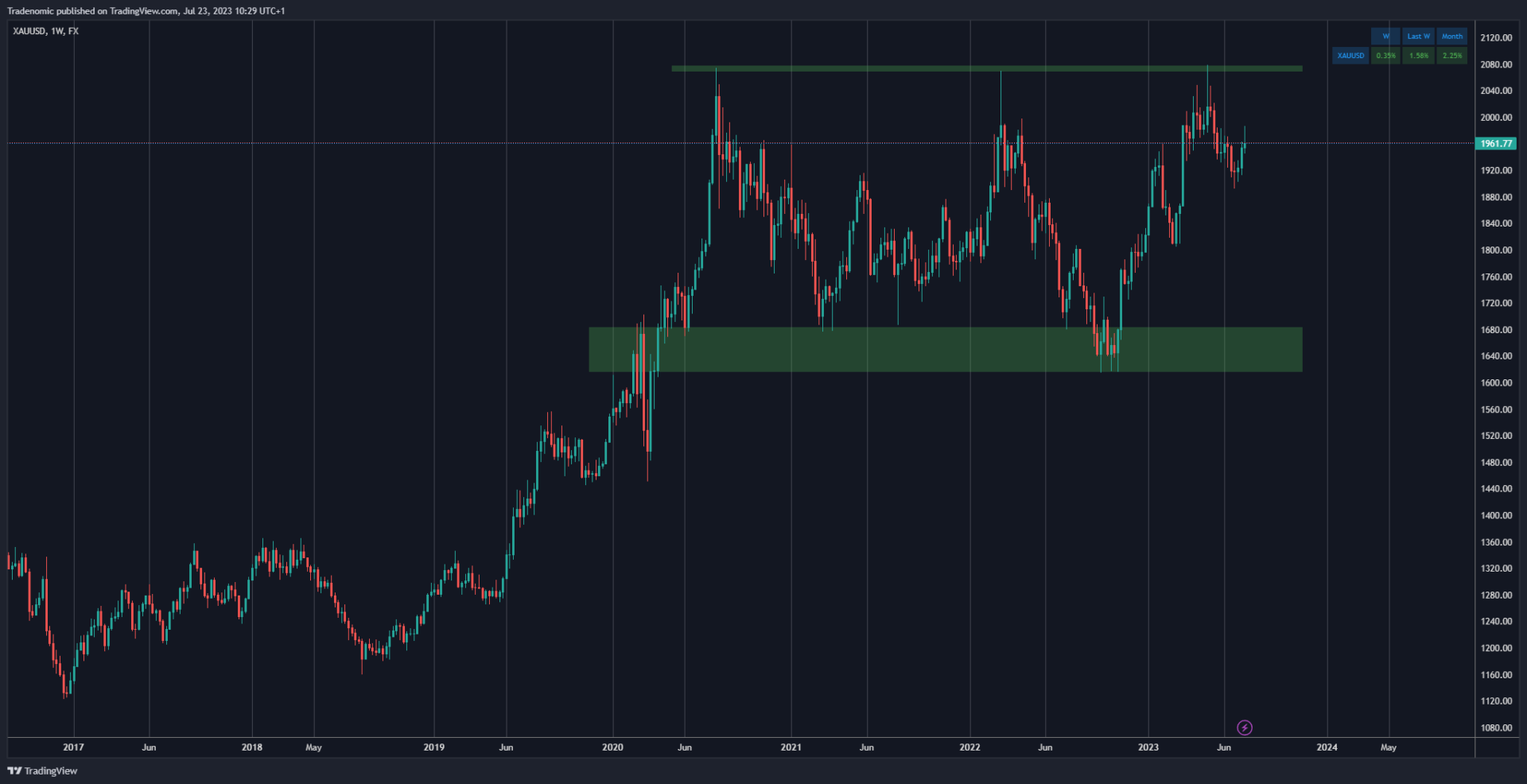Gold has been experiencing a significant surge, with its price rising over 8% so far in 2023. This precious metal’s rally can be attributed to several factors, making it an attractive option for investors. Let’s delve into three key reasons behind gold’s moment to shine and why considering a tactical allocation may be prudent.

The End of Tightening Campaign: The Federal Reserve’s tightening campaign, which began in 2022, is likely to come to an end after the May rate hike. This shift in monetary policy has prompted weakness in the dollar, providing a favourable backdrop for gold. As gold is priced in dollars, a weaker dollar makes it more attractive for investors. Additionally, falling real rates, adjusted for inflation, further support gold’s rally. Historical data shows a strong negative correlation between 5-year real rates and spot gold prices over the past 20 years, indicating that gold tends to move in the opposite direction of real rates. With the Fed expected to stay on hold, gold prices are likely to find support at current levels.
Safe-Haven Appeal: Gold has a long-standing reputation as a safe-haven asset, performing well during periods of heightened market volatility and investor fear. When market turbulence and fear spiked in March due to regional bank failures, investors turned to gold as a relative safe-haven. The precious metal’s ability to provide a hedge against potential market shocks and diversify portfolios during times of financial market volatility makes it an appealing option for investors seeking stability.
Potential Hedge Against Geopolitical Risks: While many investors view gold as an inflation hedge, its relationship with inflation is nuanced. Gold’s performance is more closely tied to real rates and the dollar. Nevertheless, the precious metal can act as a hedge against geopolitical risks. With contentious events like the Presidential election on the horizon and ongoing concerns surrounding China’s economic and political influence, gold may gain support if geopolitical tensions rise. Investors seeking protection against such uncertainties may find gold to be a valuable asset in their portfolios.
In conclusion, the current market environment provides structural support for gold, with the expectation that the Fed will pause rates at the next FOMC meeting. Though gold experienced a slight decline recently due to expectations around the U.S. debt ceiling, its overall rally remains strong. Investors may consider a tactical allocation to gold as a way to navigate a slowing economy and stabilising real rates.
While gold is a non-yielding asset, its value lies in its ability to provide diversification and act as a potential hedge against unforeseen market shocks. As the precious metal continues to have its moment to shine, investors may find it to be a valuable addition to their investment strategies.
FAQs
1. Why is gold experiencing a surge in 2023?
Gold’s surge in 2023 can be attributed to multiple factors, including expectations of the Federal Reserve pausing its tightening campaign, resulting in a weaker dollar and falling real rates. Additionally, gold’s historical appeal as a safe-haven asset during times of market volatility and its potential as a hedge against geopolitical risks have contributed to its positive outlook.
2. How does the Federal Reserve’s monetary policy impact gold prices?
The Federal Reserve’s monetary policy, particularly its interest rate decisions, can influence the value of the U.S. dollar. A weaker dollar makes gold, which is priced in dollars, more attractive to investors. Furthermore, changes in real interest rates (adjusted for inflation) can affect the opportunity cost of holding non-yielding assets like gold, leading to shifts in demand and price movements.
3. Why do investors turn to gold during market volatility?
Gold has a long-established reputation as a safe-haven asset that tends to perform well during periods of heightened market volatility and fear. During uncertain times, investors seek assets that can provide stability and act as a hedge against potential losses in other investments. Gold’s historically low correlation with broad U.S. stock and bond exposures makes it an appealing diversifier in times of market turbulence.
4. Is gold an effective hedge against inflation?
While many investors consider gold as an inflation hedge, its relationship with inflation is more complex. Gold’s performance is influenced more by real interest rates and the dollar than by inflation per se. Gold may perform better in an environment of falling real rates and a weakening dollar, which can be indicators of slowing economic growth and reduced inflationary pressures.
Schedule Your Personalised Consultation Today!
Ready to take the next step towards achieving your financial goals? Schedule a call with one of our expert advisers today! Our team are here to provide guidance based on your unique financial situation and help you make the most of the insights gained from our resources. Don’t miss out on the opportunity to receive professional advice and tailored strategies. Take action now and let us guide you towards a brighter financial future.
Discover Market Insights!
Are you eager to make informed and strategic investment decisions? Look no further! Visit our Market Analysis page now to gain exclusive access to expert insights, trends, and data that can help shape your investment journey.
Access Our Financial Calculators!
Take control of your financial future with our comprehensive suite of Financial Calculators. Whether you’re planning for retirement, considering a mortgage, or exploring investment opportunities, our powerful tools can provide valuable insights to guide your decisions.
Disclaimer: The information provided on this website is for general informational purposes only and does not constitute financial or investment advice. The content on this website should not be considered as a recommendation or offer to buy or sell any securities or financial instruments. Investing in securities involves risks, and past performance is not indicative of future results. The value of an investment may fall as well as rise. You may get back less than the amount invested. Any reliance you place on such information is strictly at your own risk. The commentary provided should not be taken as financial advice as it does not take your financial circumstances into consideration and does not provide an objective view with your requirements in mind. The views are our opinions at the time of writing and may change based on incoming information. The data shared may be incorrect or out-dated at the time of reading. Our opinions are subject to change without notice and we are not under any obligation to update or keep this information current. The views expressed may no longer be current and may have already been acted upon. Tax treatment depends on individual circumstances and all tax rules may change in the future. The information contained on this page has been prepared using all reasonable care. However, it is not guaranteed as to its accuracy, and it is published solely for information purposes.
